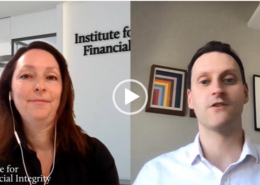A PEP Talk
Navigating the Challenges of Politically Exposed Persons in AML Compliance
📅 October 24, 2024
📅 October 24, 2024
Today’s globally interconnected economy faces a range of significant risks related to corruption and illicit financial flows. At the center of these risks are Politically Exposed Persons (PEPs), individuals who, due to their positions of power, influence, or proximity to government, present an increased money-laundering risk. Because financial institutions across the globe are often used to move illicit funds, they are tasked with the challenge of identifying and managing these risks. In this article, we explore who PEPs are, why they pose a unique threat to anti-money laundering (AML) efforts, and how regulatory bodies and financial institutions are responding to these challenges.
PEPs are individuals who hold prominent public functions, or have close links to those who do, and, as a result, present a higher risk of involvement in corruption or illicit activities. According to international standards such as those established by global AML watchdog, the Financial Action Task Force (FATF), PEPs include government officials, military leaders, members of political parties, executives of state-owned companies, and even close family members or associates of these individuals.
Categories of PEPs include:
The key risks associated with PEPs include their:
These factors make PEPs primary threats for money laundering activities and other financial crimes because they often use their status to funnel illicit funds through legitimate financial channels.
The inclusion of PEPs in AML regulations was driven by a growing recognition of the role these individuals play in enabling corruption. Historically, the actions of PEPs in foreign jurisdictions were often overlooked, as various countries are or were non-compliant or only partially compliant with FATF Recommendations that discuss additional due diligence for PEPs. However, high-profile scandals and the fallout from global corruption cases have brought PEP-related risks to the forefront of regulator attention and resulted in additional AML regulations.
International standards began to evolve with organizations like the FATF pushing for greater scrutiny of PEPs. For example, the European Union’s 4th and 5th AML Directives require enhanced due diligence (EDD) for PEPs, emphasizing the importance of identifying PEPs at the onboarding stage and throughout their relationship with financial institutions. Regulatory bodies around the world now mandate that financial institutions assess the risks posed by PEPs and adopt strategies to mitigate these risks. Today, PEP identification and management are integral to AML compliance programs, with institutions required to implement robust EDD measures for high-risk clients.
While regulations provide clear guidelines on the risks associated with PEPs, the actual process of identifying and monitoring PEPs remains a significant challenge for financial institutions. One primary difficulty lies in tracking and verifying the status of foreign PEPs, particularly in jurisdictions with opaque financial systems.
PEP lists, often maintained by third-party vendors, can be incomplete or outdated. Even where PEPs are identified, determining the extent of their influence or their proximity to public funds can be difficult. Furthermore, family members and close associates of PEPs may engage in money laundering activities without directly involving the PEP and even without the PEP’s knowledge, further complicating the monitoring process.
These complexities often create a significant compliance burden for financial institutions, which must balance rigorous oversight with the cost of EDD, relying on the risk-based approach to determine their approach to possible vulnerabilities. Smaller institutions may struggle to maintain up-to-date data on PEPs and rely heavily on technology solutions to stay compliant.
Financial institutions face significant regulatory obligations when dealing with PEPs. One of the core requirements is the implementation of EDD to better assess the risk posed by a PEP client. This process often involves collecting more detailed information about the individual’s source of wealth, scrutinizing their transactions more closely, and implementing ongoing monitoring throughout the relationship.
Failure to properly identify and manage PEP risks can result in severe penalties. In recent years, several institutions have been fined for failing to meet their AML obligations related to PEPs.
These penalties highlight the serious risks institutions face if they do not properly assess and mitigate the AML risks associated with PEPs.
At the same time, financial institutions must tread carefully, balancing the need to meet regulatory standards with maintaining positive client relationships. In some cases, banks may decide to terminate relationships with PEPs or refuse to onboard them due to the perceived risk, which can lead to reputational challenges.
Several high-profile cases illustrate the impact PEPs can have on money laundering schemes and the global financial system.
As the world continues to grapple with corruption and financial crime, the future of PEP regulations may lie in leveraging technology to mitigate these risks. Financial institutions are increasingly relying on artificial intelligence (AI) and machine learning to automate the detection of PEPs, monitor their transactions in real-time, and flag unusual behavior that may indicate money laundering. Additionally, real-time monitoring tools are allowing institutions to continuously assess PEP risks rather than relying on static data. However, the global political landscape is continually shifting, and new challenges are likely to arise.
Overall, PEPs represent a unique and growing challenge within the AML landscape. Their access to power and public funds makes them high-risk for corruption and money laundering activities. As regulatory bodies continue to tighten controls around PEPs, financial institutions must adopt sophisticated tools and technologies to stay compliant and safeguard their operations from the risks associated with PEPs. The ability to manage PEP risk will remain a critical aspect of AML compliance for financial institutions worldwide.
It’s important to note that while PEPs are considered higher-risk due to their influence and potential access to public funds, their status does not inherently imply criminal behavior. The primary challenge for financial and other institutions that have or may consider having PEPs as clients is to balance this reality with regulatory obligations.
While performing enhanced due diligence to assess the risk of money laundering or corruption is important, institutions should not automatically assume guilt based solely on a client’s PEP status. This may lead to challenges in maintaining client relationships, as over-scrutiny could harm business opportunities, and under-scrutiny may result in regulatory penalties. This delicate balancing act requires robust monitoring systems that allow institutions to adjust their risk assessments without unfairly targeting their PEP clients.
Designed for all employees of financial institutions, our flagship eLearning course reviews the concepts of money laundering and terrorism financing as well as global standards, primary regulatory bodies, and enforcement actions.
Reach out to our team to schedule a demo.










 Risky Convergences
Risky ConvergencesThis site uses cookies. By continuing to browse the site, you are agreeing to our use of cookies.
Accept settingsHide notification onlySettingsWe may request cookies to be set on your device. We use cookies to let us know when you visit our websites, how you interact with us, to enrich your user experience, and to customize your relationship with our website.
Click on the different category headings to find out more. You can also change some of your preferences. Note that blocking some types of cookies may impact your experience on our websites and the services we are able to offer.
These cookies are strictly necessary to provide you with services available through our website and to use some of its features.
Because these cookies are strictly necessary to deliver the website, refusing them will have impact how our site functions. You always can block or delete cookies by changing your browser settings and force blocking all cookies on this website. But this will always prompt you to accept/refuse cookies when revisiting our site.
We fully respect if you want to refuse cookies but to avoid asking you again and again kindly allow us to store a cookie for that. You are free to opt out any time or opt in for other cookies to get a better experience. If you refuse cookies we will remove all set cookies in our domain.
We provide you with a list of stored cookies on your computer in our domain so you can check what we stored. Due to security reasons we are not able to show or modify cookies from other domains. You can check these in your browser security settings.
These cookies collect information that is used either in aggregate form to help us understand how our website is being used or how effective our marketing campaigns are, or to help us customize our website and application for you in order to enhance your experience.
If you do not want that we track your visit to our site you can disable tracking in your browser here:
We also use different external services like Google Webfonts, Google Maps, and external Video providers. Since these providers may collect personal data like your IP address we allow you to block them here. Please be aware that this might heavily reduce the functionality and appearance of our site. Changes will take effect once you reload the page.
Google Webfont Settings:
Google Map Settings:
Google reCaptcha Settings:
Vimeo and Youtube video embeds:
You can read about our cookies and privacy settings in detail on our Privacy Policy Page.
Privacy Policy